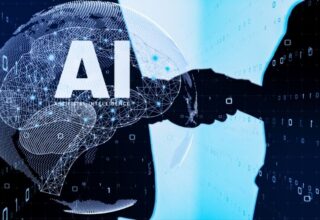
Sustainability is moving from boardroom aspiration to IT execution. CIOs are uniquely positioned to lead that charge, and it starts with only a few high-impact moves.
Enterprise sustainability initiatives are evolving, and IT is at the forefront of this transformation. From energy consumption and equipment waste to vendor partnerships and cloud strategy, IT operations carry a substantial environmental footprint.
As organizations double down on their Environmental, Social, and Governance (ESG) commitments, CIOs play a critical role. In fact, Gartner predicts that by 2027, 75% of CIOs will be held accountable for the environmental impact of their technology decisions. The good news? Sustainable IT doesn’t require a complete overhaul.
5 Ways CIOs Can Build a More Sustainable IT Environment in 2025
1. Adopt Cloud-First Policies with Green Providers
Key actions: Prioritize cloud providers with renewable-powered data centers, use sustainability-focused SLAs, and adopt cloud-native tools to track emissions. Dell’s 2024 ESG report highlights how cloud migrations, particularly to providers utilizing renewable energy and energy-efficient cooling, have enabled enterprises to reduce operational costs and environmental impact. These gains stem from the efficiencies and green technologies that leading cloud vendors have implemented on a large scale.
Key benefits:
- Reduced operational costs
- Smaller carbon footprint
- Improved alignment with ESG goals
Adopting a cloud-first approach extends beyond modernization; it’s a step toward both environmental and financial sustainability. Moving workloads to the cloud reduces your carbon footprint. Not all providers are equal, leading hyperscalers to invest in renewable energy, water-saving cooling, and carbon-neutral data centers. A cloud-first policy with sustainability-focused SLAs ensures efficient and eco-friendly IT operations.
Quick stat: Google Cloud operates at 1.1 PUE, one of the lowest in the industry, powered by 100% renewable energy.
2. Establish Device Buyback and Recycling Programs
Implementation checklist: Partner with OEMs and ITAD providers, establish buyback and refurbishment policies, and educate users on device return practices. By extending the life of devices and reducing landfill waste, CIOs can simultaneously cut procurement costs and improve ESG metrics. Partnering with vendors that support sustainable lifecycle services ensures responsible device retirement and promotes a greener IT footprint.
Key strategies:
- Partner with OEMs and ITAD (IT Asset Disposition) providers
- Promote buyback and refurbishment internally.
- Utilize certified recyclers for the end-of-life management of devices.
Pro tip: Standardizing device models enhances repairability and resale value, thereby improving sustainability.
3. Optimize Data Center Energy with AI-Powered DCIM Tools
Benefits of DCIM: Gain insights into real-time energy consumption, optimize cooling with AI tools, and uncover underutilized hardware for improved capacity planning. DCIM tools (Data Center Infrastructure Management) not only uncover energy-saving opportunities but also help IT leaders make data-driven decisions about power distribution and hardware utilization. Integrating AI-powered analytics with DCIM can further enhance efficiencies, reduce PUE, and support an agile, green IT environment.
Core functions of DCIM:
- Real-time monitoring of energy and power density
- Visualization of underused assets
- AI-driven workload optimization
Dell Example: A mid-sized financial services company reduced energy costs by 18% within a year of deploying AI-powered DCIM.
4. Switch to Energy-Star Certified Infrastructure
Dell’s research highlights the benefits of using ENERGY STAR-certified hardware, showing that organizations experience significant reductions in both cooling costs and energy consumption.
When refreshing servers, storage, and networking gear, it’s essential to choose equipment that meets ENERGY STAR or similar energy-efficiency standards. These certified components use less power and generate less heat, which in turn reduces the cooling requirements of data centers.
Additionally, industry ESG findings suggest that companies standardizing on ENERGY STAR-certified equipment can achieve substantial savings in energy and cooling costs. This approach is often aligned with utility rebate programs, offering a clear return on investment.
As data centers become more complex and larger, each watt saved adds up. Therefore, opting for energy-efficient hardware isn’t just an environmentally conscious decision; it’s also a strategic one.
Bonus: Many utility providers offer rebates or financial incentives to businesses that invest in certified energy-efficient equipment, helping offset the upfront costs while encouraging greener operations.
5. Build Sustainability into IT Vendor Scorecards
CIOs can boost sustainability by incorporating ESG metrics, like emissions reporting, environmental certifications, and e-waste recovery organization, into vendor evaluations. Leading vendors now publish emissions data and sustainability benchmarks; integrating these into procurement scorecards promotes transparency and accountability. Including ESG criteria in RFPs and ongoing assessments ensures partners align with your environmental goals. Prioritize vendors with clear sustainability roadmaps, emissions tracking, and ethical sourcing practices to strengthen your organization’s ESG impact.
What to include: Carbon emissions reporting, environmental certifications, e-waste handling, and green logistics.
Measuring Success: The KPIs That Matter
Sustainability efforts are only as strong as the metrics that back them. CIOs should establish clear KPIs such as:
- Power Usage Effectiveness (PUE)
- IT asset recovery rate
- Carbon offset percentage
- Renewable energy usage
- Lifecycle extension per device class
How WEI Is Driving IT Sustainability
At WEI, sustainability is not a buzzword; it’s embedded into how we operate and deliver IT solutions. Our Corporate Responsibility and Sustainability (CRS) Plan outlines aggressive goals in energy efficiency, environmental impact, and community involvement. From deploying HVAC economizers that cut cooling needs by 90% during peak seasons to sourcing Energy Star-certified equipment and utilizing LED lighting throughout our facilities, we are reducing our carbon footprint one initiative at a time.
Our delivery strategies reduce fuel use by 50%, and we’re committed to exploring solar and wind energy options to offset emissions further. Additionally, WEI works closely with clients to integrate sustainable IT practices into their infrastructure, whether advising on green cloud migrations, optimizing data centers, or selecting eco-conscious vendors.
Next Steps
To build a sustainable IT environment, begin with a clear roadmap that strikes a balance between quick wins and long-term goals.
Start with an audit:
- Identify energy-intensive systems.
- Track underutilized assets and inefficient workflows.
- Use DCIM, cloud calculators, and asset inventories to assess impact.
With this baseline, refresh procurement policies and prioritize green-certified vendors. Look for partners committed to sustainability, not just compliance.
- Leverage solutions like ENERGY STAR-certified infrastructure, AI-powered DCIM, and cloud-first architecture to align environmental and ROI goals.
- Cultural change matters too; embedding ESG into procurement and operations drives smarter, climate-conscious decisions.
Ready to act?
WEI can help turn your ESG goals into measurable outcomes through tailored DCIM and cloud-first strategies.
Final Thoughts
IT sustainability is no longer a fringe conversation. It’s now a strategic imperative and a business differentiator. Dell’s 2024 ESG report confirmed that sustainable IT investments can simultaneously reduce environmental impact and improve operational efficiency. At WEI, the right technology and strategy lowers emissions, reduces costs, and supports employee well-being.
WEI’s Corporate Responsibility Plan demonstrates what’s possible, from reducing HVAC energy use by 90% to adopting LED lighting and smart delivery routing. Our commitment to green IT initiatives shows we’re practicing sustainability, not just talking about it.
As enterprises prepare for 2025, sustainability should be central to every IT roadmap. These five strategies provide CIOs with a blueprint for a greener, more responsible IT future, without compromising performance or cost. The path to sustainable IT is already underway.
Next Steps: Between AI adoption, hybrid cloud, and cyber threats, your next storage refresh needs to do more than just expand capacity…it must futureproof your infrastructure.
This exclusive tech brief from WEI and Dell Technologies breaks down everything you should demand from your next storage solution. Download our exclusive tech brief, Critical Requirements For Your Next Storage Refresh.



